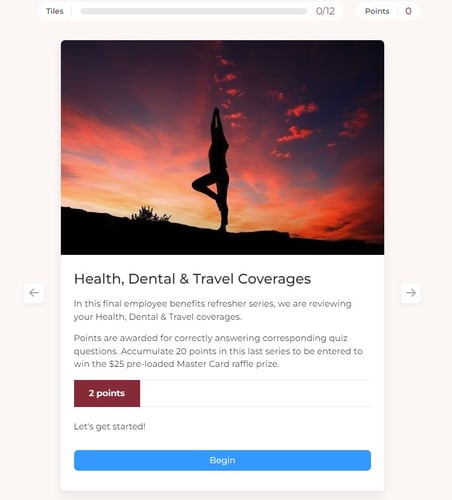Artificial Intelligence is changing the administration of employee benefits in numerous ways. As with all things AI, it has the ability to handle routine tasks and inquiries to free up time for your human resources personnel to concentrate on their people role more and their paperwork less. But that is just the tip of the iceberg. AI also can assist both your firm’s management and employees in a variety of ways.
3 Main Benefits of Using AI for HR and Employee Benefits Administration
Artificial intelligence is used to coordinate information between payroll and benefit carriers to:
- reduce data entry time and minimize errors
- answer routine questions such as providing employees with healthcare spending account balances or the number of vacation days remaining
- ensure compliance with legislation across provinces
6 Examples of How AI Can Streamline Your HR Processes
1. Simplify Payroll And Benefits Onboarding For Both HR And Employees
Onboarding becomes easier with automated checks, which ensure that payroll and benefit enrollment forms are accurate. AI can ask for missing data or corrections in real-time, minimizing any back and forth between the employee, plan administrator, and the insurance company.
In addition, reminders can be set at regular intervals to prevent employees and benefits administrators from missing crucial deadlines.
With respect to benefit elections, AI can:
- Educate employees on their options
- Help them to choose the best option based on demographic and personal data
- Streamline enrollment into the desired benefits

Source: Unsplash
2. Automate and Enhance Employee Education
 Employees who understand their plans are more engaged, productive, and appreciative of their employers. Gamification tools (for example, messaging about benefits in the form of an Instagram-like quiz) can improve employee benefits communication and facilitate a better understanding and active use of these benefits.
Employees who understand their plans are more engaged, productive, and appreciative of their employers. Gamification tools (for example, messaging about benefits in the form of an Instagram-like quiz) can improve employee benefits communication and facilitate a better understanding and active use of these benefits.
These tools can be used as part of the onboarding process, as annual refreshers, or when changes are made to the plan.
Chatbots or digital assistants can provide personalized advice or respond to FAQs about the benefits plan, overall compensation, or company policies.
One of the newest applications of artificial intelligence is in the area of financial wellness. There are a number of tools designed to automate budgeting and saving. These apps can provide 24/7 assistance, help with goal setting, and create a basic financial plan.
Employers should consider support in this area, as having savings and a financial plan are the keys to reducing money stress and improving productivity.
3. Improve Plan Design and Personalize Benefits
Artificial Intelligence can help you update your benefits plan using predictive analytics to determine which benefits are most preferred or desired amongst your staff.
It can also be used to assess health risks within the employee population, allowing it to make recommendations to remove, add, or update certain benefits.
Example:
If employees are claiming more prescription medication for depression or anxiety, AI may recommend pharmacogenetic testing to reduce dollars spent on trial and error or increase adherence. Other suggestions may include upping the reimbursement percentage for counseling services or adding mental health first-aid training for leaders.
4. Regularly Evaluate Risks of Retirement Plans You Offer
Whether your company offers a pension plan, deferred profit sharing plan, or group RRSP, AI will help you assess the risk of the investments and identify employees who may be taking on too little or too much risk based on their age, investment knowledge, and timeline. You also can use aggregated data to identify trends that can be addressed through education or changes to the overall investment portfolio.
Another way to use AI for retirement plan governance is to improve participation rates via auto-enroll features or to enable auto-increase features to encourage employee’s to save more for their future retirement.
5. Improve Health Outcomes
There are numerous ways your company can try to improve the health and well-being of your coworkers. Insurance companies offer nudges from digital health coaches and AI enhances it by personalizing these tips. They prompt employees to move more, eat better, stop smoking, lose weight, and improve sleep, all tailored to their lifestyles and habits.
Another useful feature of the insurance companies’ smartphone apps allows employees to find healthcare practitioners, pharmacies, and the lowest dispensing fees based on their query.
Several insurers have programs that allow staff to utilize the data from wearable tech such as smartwatches to record exercise, sleep, diet, and other health-related information resulting in shopping discounts or other financial incentives.
6. Prevent Benefits Fraud
Fraud in extended health plans, particularly for vision care and complementary practitioners, such as massage therapists and physiotherapists, affects the overall premiums that employers must pay. To help reduce benefits fraud insurance companies are using artificial intelligence to quickly comb through large amounts of data. Combined with increasing cooperation between insurance carriers false claims and fake businesses are being detected more frequently.

Source: Unsplash
The Canadian Life and Health Insurance Association (CLHIA) worked with insurers to create cooperative data pooling. This agreement along with AI, can now spot suspicious activity across carriers. For example, previously, a single practitioner may have been able to bill twenty appointments in a single day across four or five carriers and not arouse suspicion. However, with data pooling, unusual activity can be detected and fake businesses uncovered or unscrupulous practitioners barred from reimbursement.
What are the Risks and Caveats of AI in HR?
Avoid using generative AI to answer specific questions
At this point, AI answers questions based on general use or common circumstances. However, specific situations may need a different answer. Relying on AI could result in wrong information that could prove costly to an employer if regulations or legislation were interpreted incorrectly.
Don’t rely on AI to create policy initiatives
While it's fine to use software to create a draft, it's necessary to review any policy for specific circumstances and comply with appropriate legislation, as employment standards and taxation of benefits vary from province to province. Human rights legislation may need to be taken into account as well.
Don’t feed employee-specific information into a generative AI program
It could be shared with a wider audience, violating your workers’ privacy rights. Of course, employee details can be shared with your payroll and benefits providers as these are protected and access is limited.
Be wary of using voice recognition to access sensitive or private data
It is possible for AI to duplicate someone’s voice, setting up a situation where a fraudster could access an employee’s confidential health data or make unauthorized withdrawals from savings or investment accounts. To avoid a security breach insist on the use of complex passwords or an identification method that cannot be duplicated easily.
Conclusion
As Artificial Intelligence continues to evolve so will the applications and uses for insurance companies offering employee benefits and for employers wanting to enhance employee health while removing routine tasks from the hands of their payroll and human resource teams. Adoption of AI tools can improve the employee experience leading to a happier, healthier, and more productive workforce. But caution must be exercised to protect privacy, and ensure that workers continue to feel the human touch from leadership.







